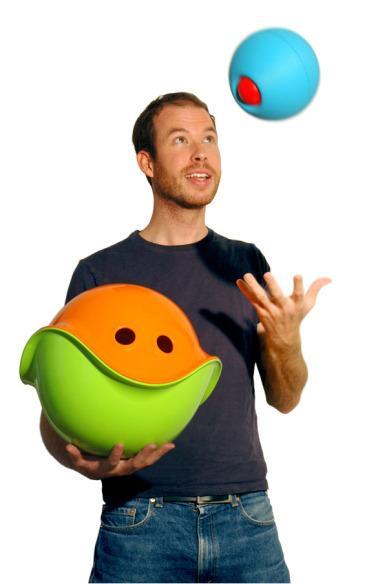
Design thinking has become part of contemporary design and engineering practice. Whilst it used to be a professional niche where a designer was asked to create something attractive, a better looking widget, it is today a more collaborative, human-centred approach that is used to solve a broader range of challenges. Design thinking is used to tackle complex problems in areas such as health care, education, global poverty, and government.
Usually the focus in design thinking is on finding and developing ideas with a specific purpose and function – user-friendly computer screens, easy to open packing, and co-ordination of healthcare to ensure that the treatments are effective. But if you want to design a toy for children, another approach might be suitable. Alex Hochstrasser of MOLUK is the award winning creator of Bilibo and Plui. His approach relied an ambiguity.
Bilbo looks like a bowl!
At the reception for the TOTY awards, Alex overheard a woman wondering why a salad bowl was among the nominees for preschool toy of the year. Bilbo challenges all our ideas about what a toy should look like. The purpose and the function of the toy are, well, difficult to see. But kids see the possibilities of creating new games and testing ideas by using this toy.
Alex designed the toy on purpose to show hidden play qualities. The toy contains the seed and kids are invited to make the toy blossom under their care and playing.
What would this approach mean for other areas of design thinking? How can we find ideas and materials that inspire people to explore the education policy rather than simply apply and consume the new policy? What could it mean for the establishment of a public space or a hospital?
Go here to read an article by Alex.
Photo from http://www.moluk.com/about.php
